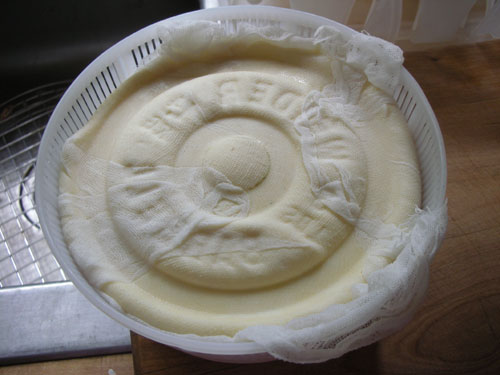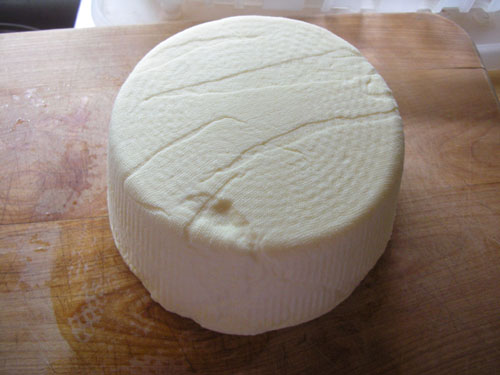For Christmas, I gave Noel a cheesemaking kit from Cheesemaking.com. It took us a while to get around to it, but this week we went and bought two gallons of Strauss Family Creamery's non-homogenized whole milk from the Alameda Market, and today we started a batch of cheddar cheese.
You begin by heating the milk up to 90F over gentle heat.
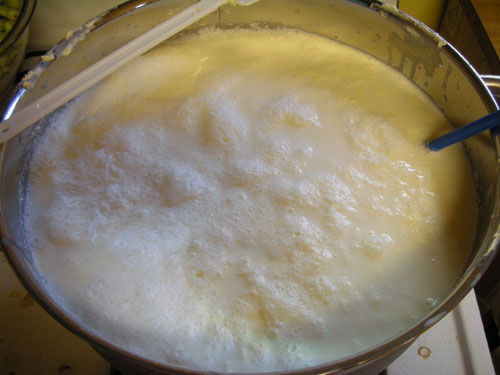
When it warms up, the butterfat melts and rises to the top. With homogenized milk -- the stuff you usually get at the grocery store -- this would not happen.
Then the milk gets a bacterial culture and goes to sit in a nice warm place (we put it in a warm oven) for about an hour. After it's cultured for a while, you add the rennet, which it the stuff that makes it into cheese. Another hour later curds have formed, but now you need to cut them into small chunks so you can squeeze out all the whey and have solid cheese.
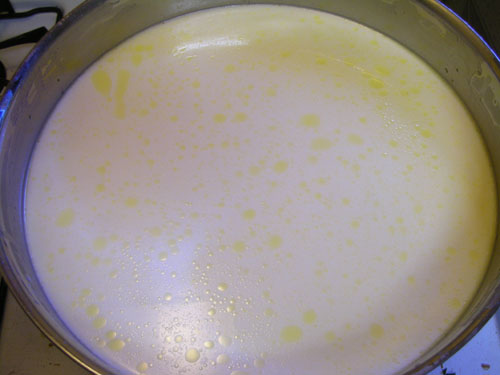
So you take a knife and slice it up into tiny pieces.
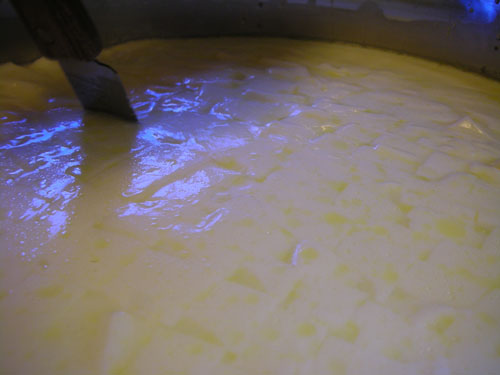
To get the curds to firm up some more and separate from the whey, you heat the pot very slowly in a water bath. We used the sink and poured in hot water from a kettle. Stir it gently to spread the heat evenly.
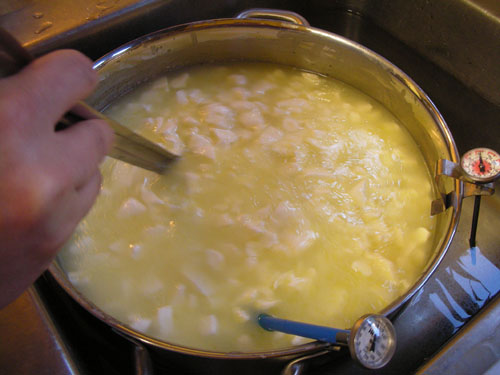
Then it's time to filter out the curds in a cheesecloth.
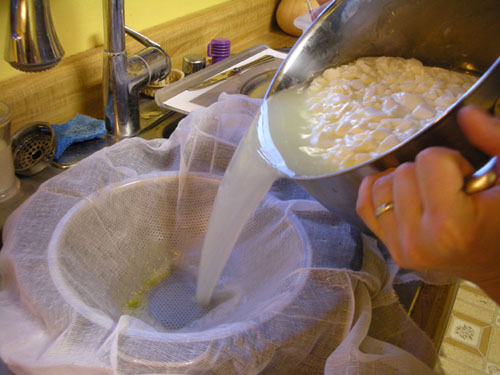
They're quite wet with whey still.
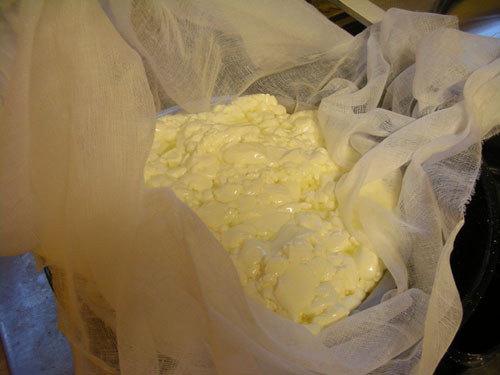
So we hung them in the cheesecloth for an hour or so, letting the whey drip out into a pot. Maybe we can come up with some great use for whey.
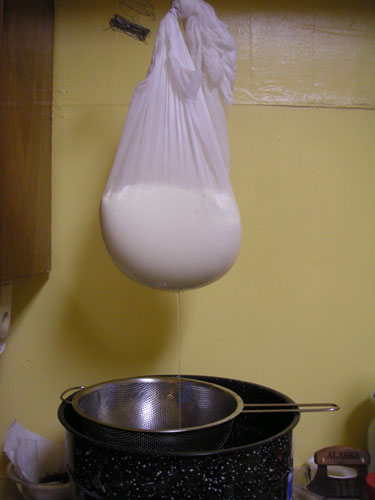
At this point it became obvious that almost everything we own eventually becomes a kitchen appliance or tool. For example, the 30-lb free weights.
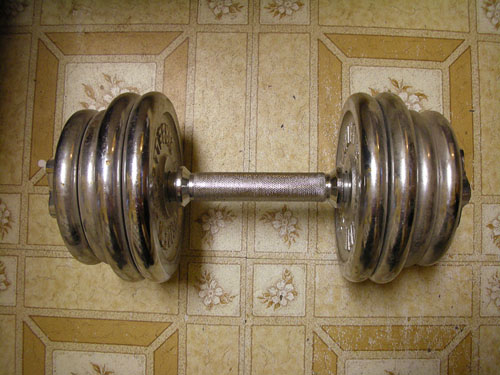
The curds come down from being hung still very wet.
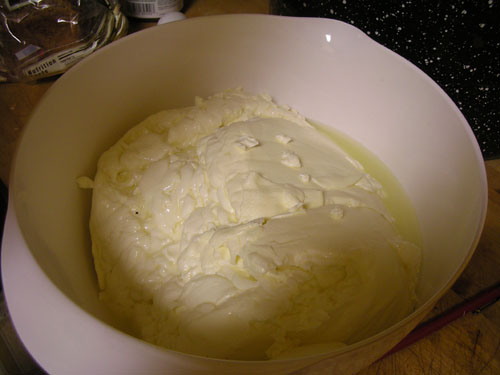
At this point we broke them up, and added salt as a preservative (and for flavour).
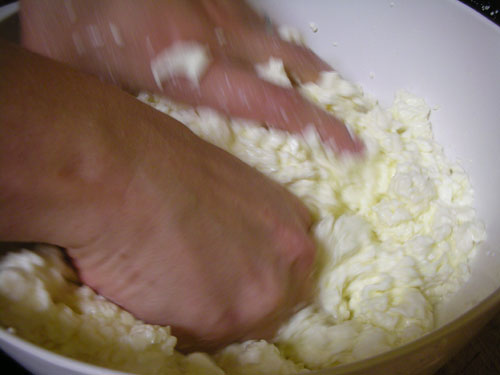
Then they go into a cheesecloth-lined cheese mold to be pressed. We did this in the sink because it was very drippy. The pressing squeezes out even more whey.
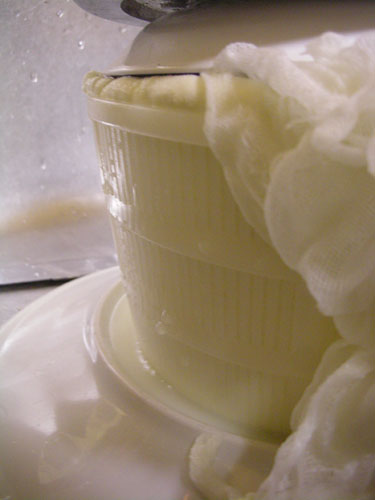
After 15 minutes, we took the cheese out (to adjust the cloth) and Noel posed with his future cheese.
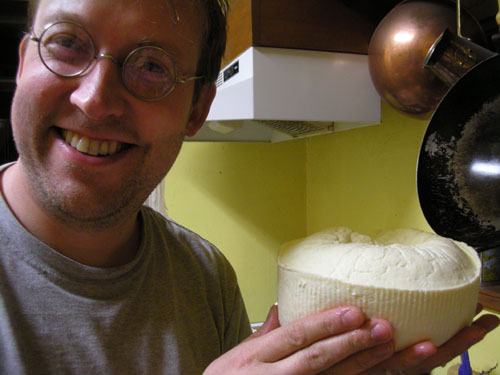
Then it was back into the mold with more weight on top.
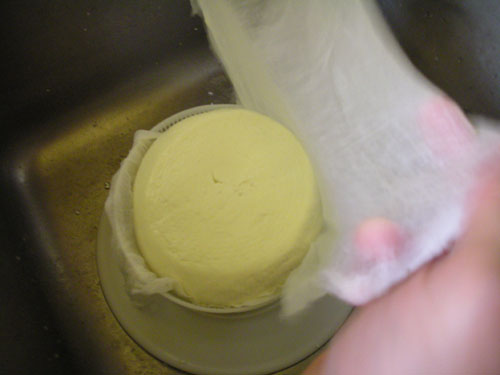
It'll sit like this until tomorrow morning, when we will turn it over again, then until tomorrow night, when we will remove it from the mold and let it dry out on the counter for a few days, after which we can wax it and set it in the basement to cure.
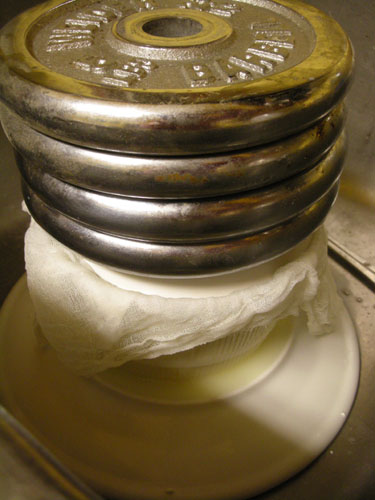
It's a few months of waiting until we have cheese, but we are pretty excited.
